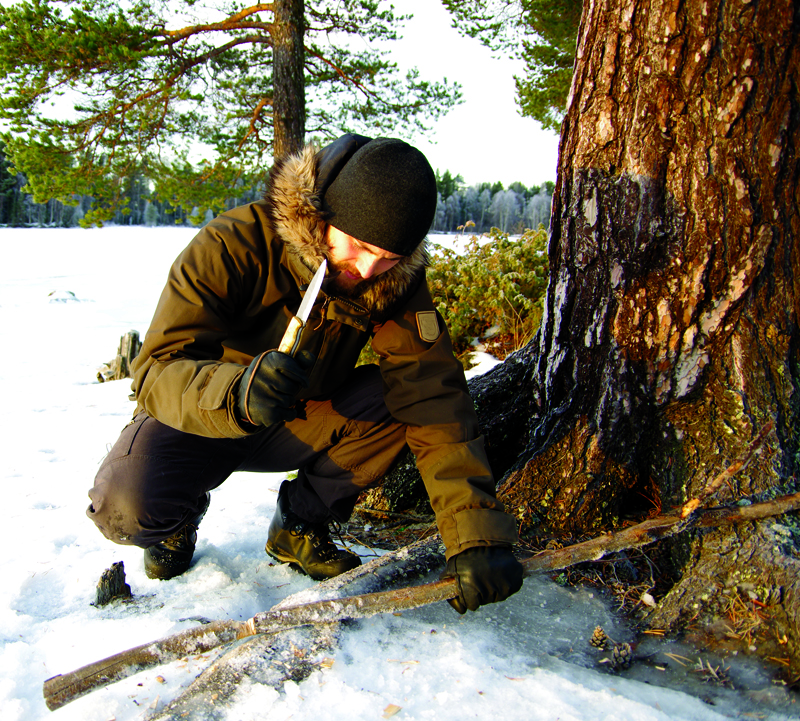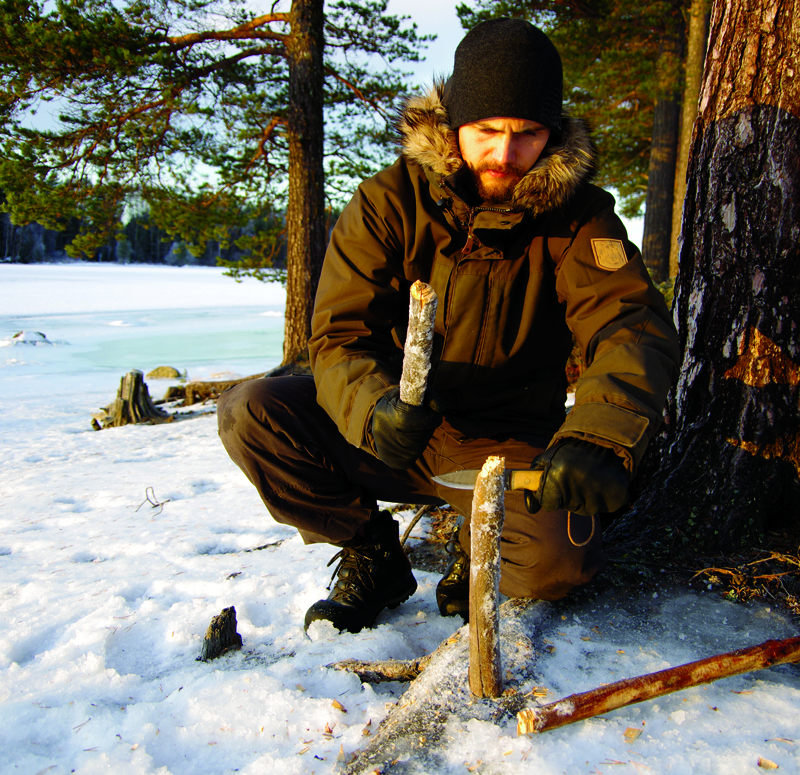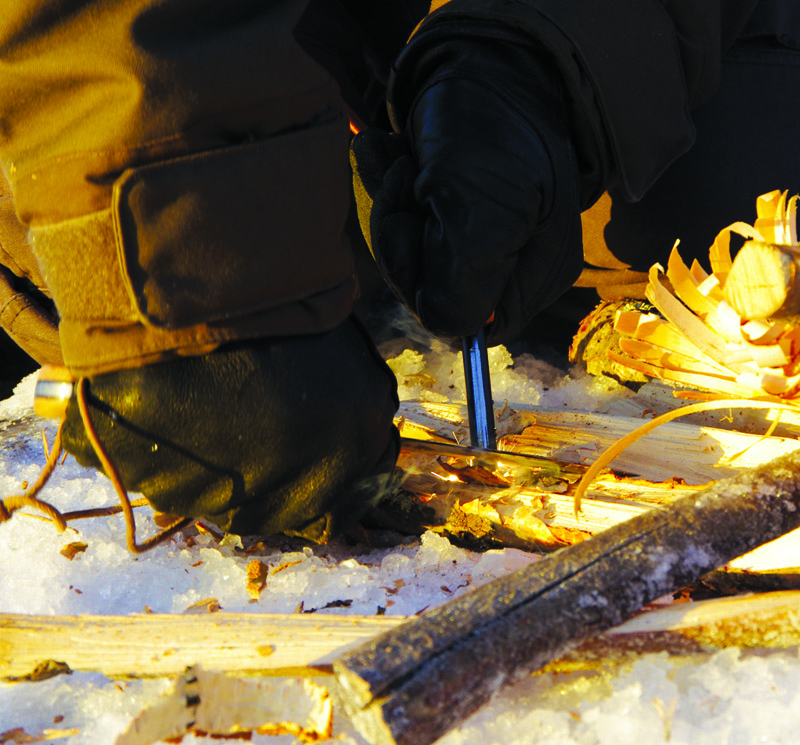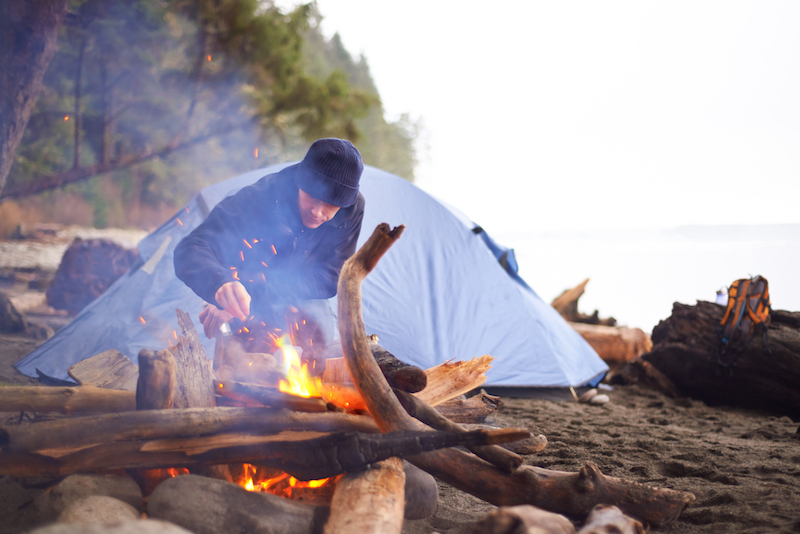A knife is one of the most important pieces of kit you can take with you on a wild camping or bushcraft trip. Here, founder of Casstrom Knives David Cassini Backstrom explains how to use a knife in a bushcraft or survival scenario.
Cutting small trees or dry branches

Whether you are getting materials for a shelter, building a tripod or collecting firewood, you will need to cut branches into smaller parts. This is often best done with an axe, but in the absence of an axe, your knife should be able to handle this. It can be done by chopping, cross-grain batoning or carving.
Chopping is fast but by far the riskiest method, both for you and your knife, so should be avoided unless you have practiced a safe technique and understand the risks. Cross-grain batoning is quite fast and can be done safely by avoiding the knife edge being batoned through knots. Normal carving, done carefully, is a safe method that works well if you just allow some time. The knife edge may need touching up or re-sharpening after all these tasks, so keep a sharpener to hand.
Wood splitting

One of the most common tasks in buschraft is making kindling for a fire from larger logs. A bushcraft knife should have a thick blade and an acute grind to ensure that it can effectively split logs by placing the edge over the log and batoning with another piece of wood (the baton) on the knife tip, forcing it gradually through the log. For stubborn logs you can use wedges to aid the process.
Making feather sticks

Making feather sticks will allow you to start a fire even if the conditions are hard. Making them requires some practice and preferably a sharp knife. By making thin shavings along the grain of the wood, kindling curls will form that can be left on the stick and help make fire lighting simpler.
Fire lighting

Knives can also be used to make fire when used in combination with a fire striker steel rod made from ferrocerium. By scraping the back of the knife against the steel, the friction will create sparks. The sparks can then be used to ignite bark scrapings or other tinder, and the feather sticks and kindling can be used to build the fire from there. In order to do this you will need a knife with a 90 degree spine (not rounded or polished) in order to throw a good amount of sparks.
In absence of a fire striker steel, a normal piece of flint stone can be used by striking with the back of a carbon steel knife against the flint to generate sparks. This technique is much harder but very fulfilling once achieved. A very good tinder must be used for this like char cloth or dry tinder from a tinder fungus.
Carving useful objects

Carving spoons or other tools and equipment around the camp is a central part of bushcraft and one that allows you to practice knife-handling skills. Wood carving is also very rewarding and, whilst it is best done with specific wood carving knives, a good bushcraft knife in combination with the right technique can allow you to create some great things.



